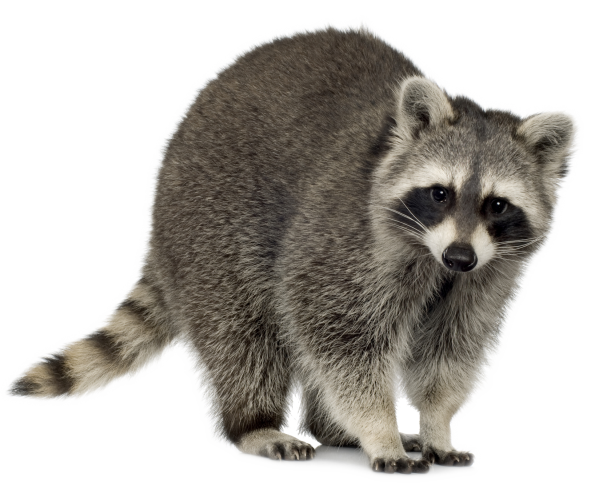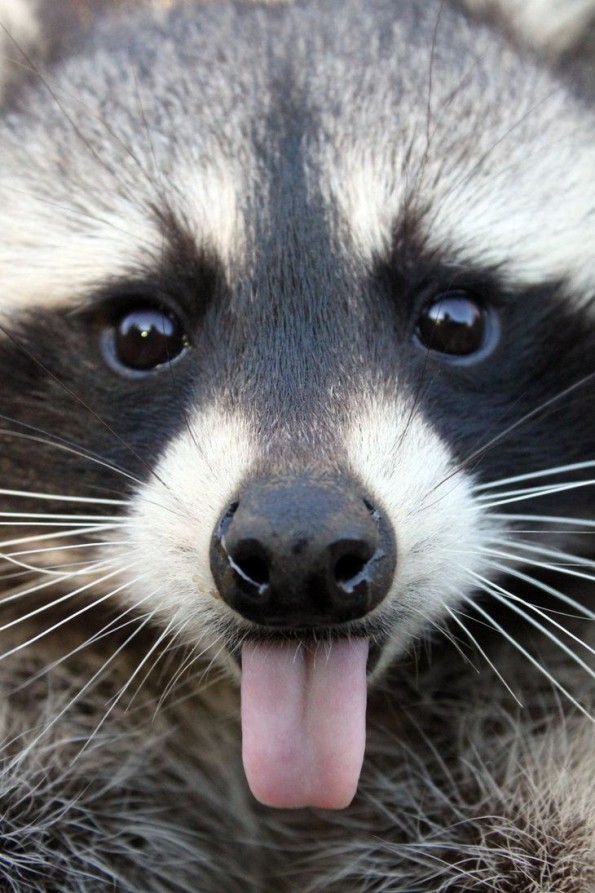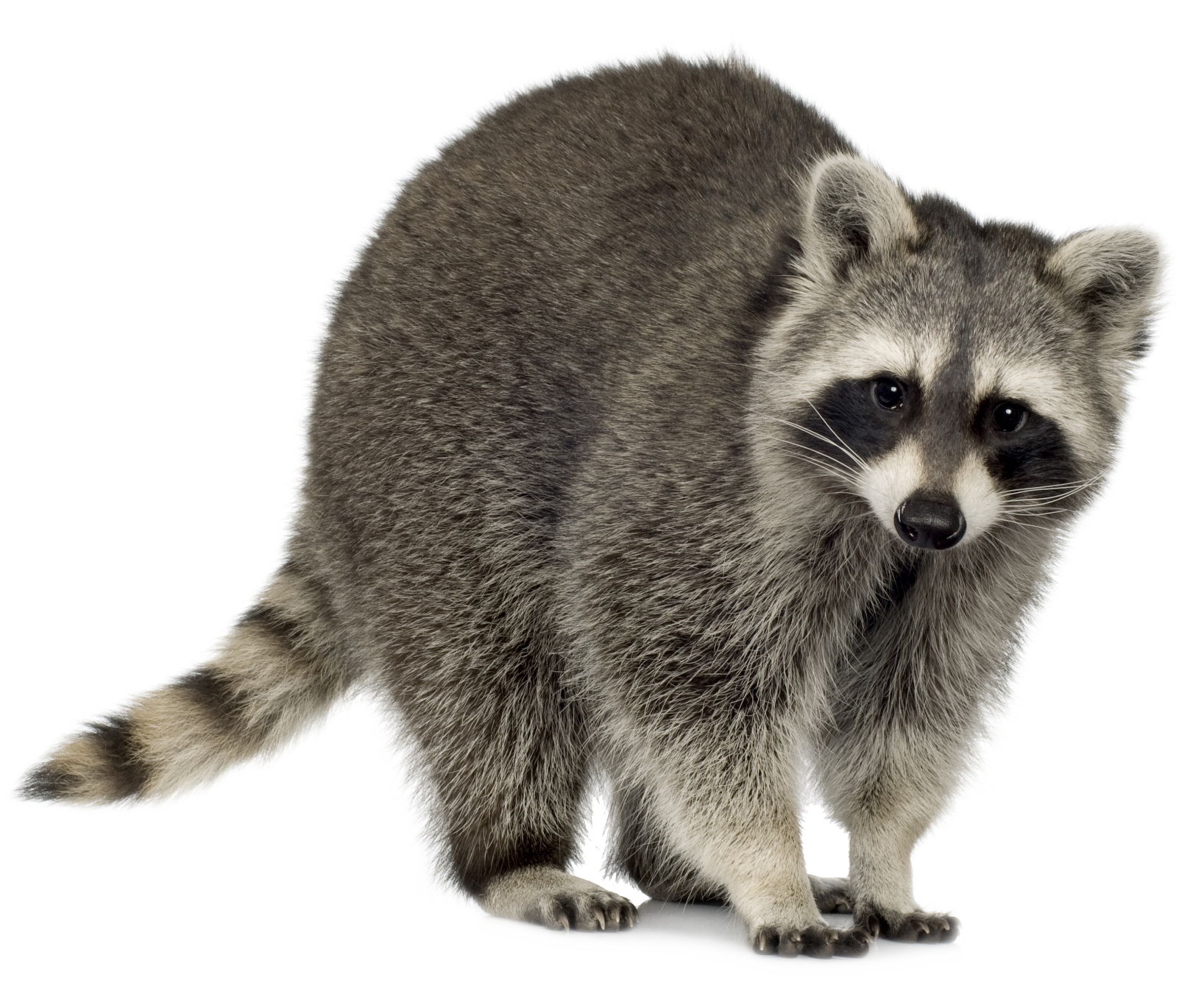 Two black, beady eyes peer out from a behind a furry mask as the bandit plans her next move. She has already devoured most of the Little Friskies in the bowl on the back porch, and the garbage cans near the garage are sure to contain something delicious for dessert.
Two black, beady eyes peer out from a behind a furry mask as the bandit plans her next move. She has already devoured most of the Little Friskies in the bowl on the back porch, and the garbage cans near the garage are sure to contain something delicious for dessert.
As her squat body ambles slowly toward this smorgasbord, the motion detector above the garage door triggers a security light, flooding the quiet darkness with a harsh and startling glow. Frantically, the bandit scrambles toward the hole under the fence and returns to the field next door where her kittens wait to be fed. Tonight’s mission, while not a total success, has at least filled the bandit’s belly. This night, the homeowner remains blissfully unaware that a nocturnal visitor has trespassed in his yard.
Intelligent and adaptable, raccoons are almost as common in suburban Utah as ants at a picnic, but it wasn’t always so. The North American raccoon, Procyon lotor, is not a Utah native, having been brought here by hunters. Their numbers have exploded since the 1950s, due in part to the irresistible quantity of food that humans discard. The Latin name means “washer” because of their amiable tendency to dip their food in water. Other procyonids include the coati mundi, kinkajou, and several other exotic species that share the traits of banded tails and distinctive facial markings, along with highly dexterous fingers and non-retractile claws.
While most raccoon encounters are benign, raccoons are bold and opportunistic predators that have little fear of humans, and they are not shy about establishing residency in chimneys, attics, walls, or any other convenient or inconvenient space. The damage they can inflict on a home is often significant and costly, in addition to collateral damage to fruit trees and gardens.
Even pets aren’t safe from these voracious omnivores. Large raccoons can weigh over 30 pounds and have been known to kill chickens, cats, and other domestic animals. In their present numbers, they have even become a threat to migratory birds and native wildlife. As aggressive predators, raccoons are intimidating enough to drive even a large duck or pheasant from her nest in a quest for eggs, and they are responsible for more than half of all urban wildlife conflicts, including the spread of disease to other mammals.
Raccoons are vectors for several diseases. According to an article published by the USU Extension Service [Huxoll, Cory M., Messmer, Terry A., and Conover, Mike. 2010. Raccoons. Utah State University, Logan, Utah], “Raccoons… may carry fleas, ticks, lice, distemper, mange, rabies, and canine and feline parvovirus. The results of recent blood tests conducted on raccoons in Utah indicated that over 80% of those tested had been exposed to rabies as indicated by the presence of a rabies titer.” (A titer is a blood test that measures the amount of disease-fighting antibodies in the blood of a mammal. Rabies is 100% fatal, causing an agonizing death for unvaccinated animals.)
As a non-native species, raccoons are not protected by the state, and no permit is required to trap or kill one. The state allows for possession of a live raccoon only by permit from the Utah Department of Agriculture. Although young raccoons are adorable, adults can be destructive and unpredictable pets. As a non-game, introduced species, raccoons do not fall under the jurisdiction of the Division of Wildlife Resources, and the state will not remove or exterminate nuisance raccoons. However, in a recent collaboration with the U.S. Department of Agriculture, cities within Salt Lake County can contract with federal wild animal specialists to trap residential raccoons. At this time, four cities have opted to do so.
While urban raccoons will never be eradicated, extermination efforts are carried out in an attempt to stabilize their numbers. There are several local extermination companies that will trap and remove a bothersome raccoon for a sizable fee. One company charges three-hundred dollars to place a trap in a homeowner’s yard for two or three days, and the fee is charged whether the animal is captured or not. A raccoon unfortunate enough to be caught is summarily euthanized, and not always by humane methods.
Wildlife removal companies will only respond to calls involving healthy raccoons, and municipal animal control agencies won’t respond to raccoon calls at all because they only deal with domestic animals. This can leave homeowners in a quandary.
Homeowners can trap raccoons themselves using live trapping methods, but beware! A caged raccoon can be formidable adversary capable of doing serious damage to anything or anyone that comes within range of its claws and teeth. But you trapped a raccoon in your yard, now what?
One alternative to extermination is translocation — physically relocating a raccoon to another locale — a feel-good option that can still be fatal due to physiological stress or by the animal attempting a return to the old location amidst the many dangers of suburbia. It is also illegal in some jurisdictions. Still, most people prefer relocation to extermination when it comes to dealing with these furry bandits, and compassionate individuals often find it difficult to kill such a sentient creature.
Raccoon Protection
Learning to live with raccoons may be the best alternative, and there are easy ways to mitigate potential damage. Homeowners in raccoon-prone areas can do the following:
Don’t leave pet food or bird seed out at night. Keep pets inside and lock pet doors after dark.
Secure garbage cans so they can’t tip over, or put them in a fenced area. Tie or weight the lids.
Remove wood piles or other tempting places where raccoons might want to nest.
Inspect your chimney for nest material and install a wire chimney cap. Trim tree branches that
provide access to the roof.
Place stiff screen over dryer vents and other access points on your home.
Close off areas around low decks or crawl spaces.
Inspect foundation, soffit and fascia for holes or weak spots. Small raccoons can fit through an
opening the size of a baseball.
Raccoons are nocturnal and will avoid well-lighted areas.
For more information on raccoons:
Extension Wildlife Specialist, Department of Fisheries and Wildlife, Utah State University, Logan, UT
84322-5210 (435-797-3975)
USDA/APHIS Wildlife Services, P.O. Box 26976, Salt Lake City, UT 84126 (801-975-3315)
Wild Aware Utah, www.wildawareutah.org and on Facebook







